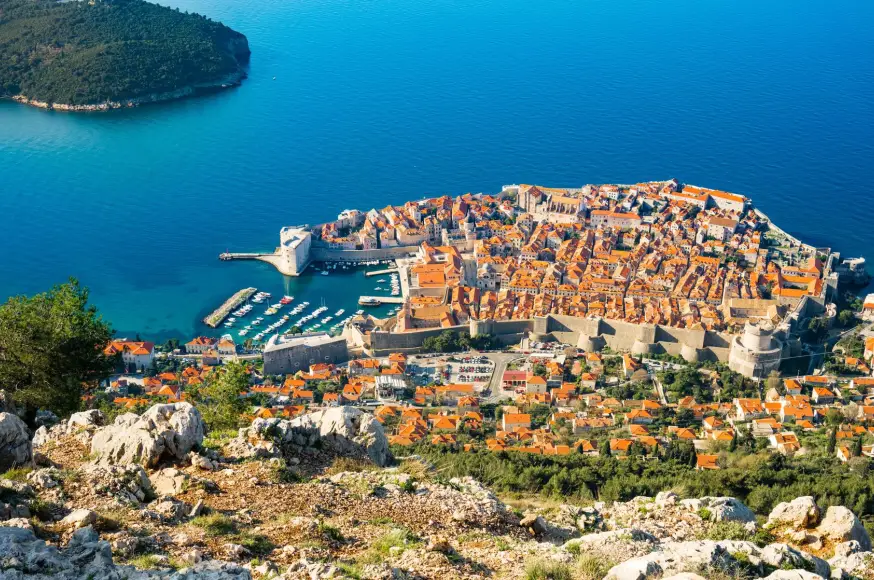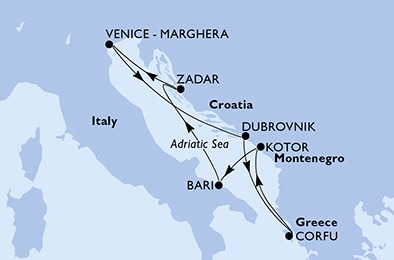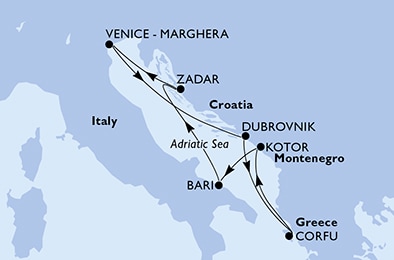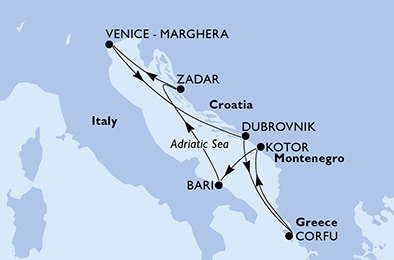
Port Dubrovnik
Dubrovnik, often referred to as the "Pearl of the Adriatic," is a stunning coastal city located in southern Croatia along the Adriatic Sea. Renowned for its well-preserved medieval architecture, the city’s historic Old Town is a UNESCO World Heritage Site and is encircled by impressive stone walls that date back to the 10th century. Visitors can walk along these ancient walls for breathtaking views of the city and the shimmering sea below. Iconic landmarks like the Rector’s Palace, Sponza Palace, and the Church of St. Blaise display Dubrovnik’s rich history and cultural heritage.
Beyond its historical charm, Dubrovnik is a gateway to natural beauty and seaside relaxation. The nearby Lokrum Island is a tranquil escape, ideal for hiking and swimming, while Banje Beach offers a perfect spot to soak up the sun with views of the Old Town. The city also gained international fame as a filming location for Game of Thrones, drawing fans to its picturesque streets and forts like Lovrijenac Fortress. Whether exploring its cobblestone streets, savoring fresh seafood, or enjoying the vibrant local culture, Dubrovnik captivates visitors with its timeless beauty and Mediterranean allure.
History
The history of Dubrovnik, a coastal city in modern-day Croatia, dates back to the 7th century, when it was founded by refugees fleeing the collapse of the Roman city of Epidaurum (modern-day Cavtat). Initially known as Ragusa, the city grew on a rocky island connected to the mainland by marshlands. By the Middle Ages, Dubrovnik became a prominent maritime power, rivaling other city-states such as Venice. Its strategic location on the Adriatic Sea allowed it to flourish as a hub of trade between the Mediterranean and the Balkans, fostering prosperity and cultural growth.
Under the protection of the Byzantine Empire, and later the Venetian Republic, Dubrovnik managed to maintain a high degree of autonomy. By the 15th and 16th centuries, the Republic of Ragusa reached its peak, known for its advanced diplomacy, skilled sailors, and progressive governance. However, the city's decline began after a devastating earthquake in 1667 and the rise of larger powers in the region. Eventually, Dubrovnik lost its independence in 1808 under Napoleonic rule. Today, Dubrovnik, often called the “Pearl of the Adriatic,” is a UNESCO World Heritage Site, celebrated for its well-preserved medieval walls, historic architecture, and its enduring legacy as a center of trade, culture, and diplomacy.





 With bus transport to the port
With bus transport to the port
.jpg)










